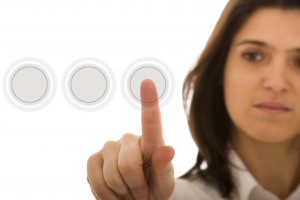Security is a top priority in hospitals, specifically with regards to patient records. Within the last decade, records have moved at an astounding pace from manilla folders to electronic databases, making record access much easier and significantly improving workflow. Unfortunately, techniques used to secure access to these records have not progressed at the same pace. Username and password combinations were long ago rendered obsolete by adept hackers, who have stolen large quantities of data from hospitals in the past. Two factor authentication systems were an improvement on the username and password combo, but only marginally. The shift to proximity cards as a means of access only slightly improved record security, as proximity cards all use the same generic card serial number. Therefore they still did not verify the authenticity of the user with 100 percent confidence.
Biometrics offer a definitive answer to the most important question in modern security: Who? In the case of a hospital, who is requesting access to these records? Fingerprint access is seeing adoption across the healthcare industry for dispensing medication, electronic prescriptions, and secure access to patient record systems. The ability of fingerprint biometrics to identify individual medical personnel with 100 percent certainty is an improvement in security of several orders of magnitude over username and password authentication, and even two factor authentication. Furthermore, authentication using fingerprint biometrics is fast, and doesn’t require staff to carry around a proximity card, which could be lost. With biometrics, workflow and security aren’t at odds with each other, in fact, they work together harmoniously.
The main criticism of fingerprint biometrics is that the ability of the system to verify a user’s authenticity is often degraded in a medical environment. Medical personnel frequently wash their hands and use alcohol-based hand sanitizers to maintain a sterile environment, which itself is often cool, bright, and dry. These factors can make it more difficult for the system to get an accurate reading of a fingerprint. To address these concerns, multispectral imaging has taken the place of conventional imaging in biometrics. In essence multispectral imaging “collects information about both the surface and sub-surface fingerprint to capture reliable data every time, regardless of whether a user’s finger is dry, wet, dirty, slightly rotated or difficult to capture.” With multispectral imaging, fingerprint biometrics are pointing toward a more secure and efficient hospital environment.
Security Systems in Columbia from ARK Systems, Inc.
Located in Columbia, Maryland, ARK Systems is dedicated to providing unsurpassed quality and excellence in the security industry, from system design to installation. We handle all aspects of security with skill and experience. With over 30 years in the industry, ARK Systems is an experienced security contractor. Trust ARK.
For any further questions about How Biometrics Are Making Hospitals More Secure simply contact ARK Systems at 1-800-995-0189 or click here today. Check us out on Facebook and Twitter as well!
Source

